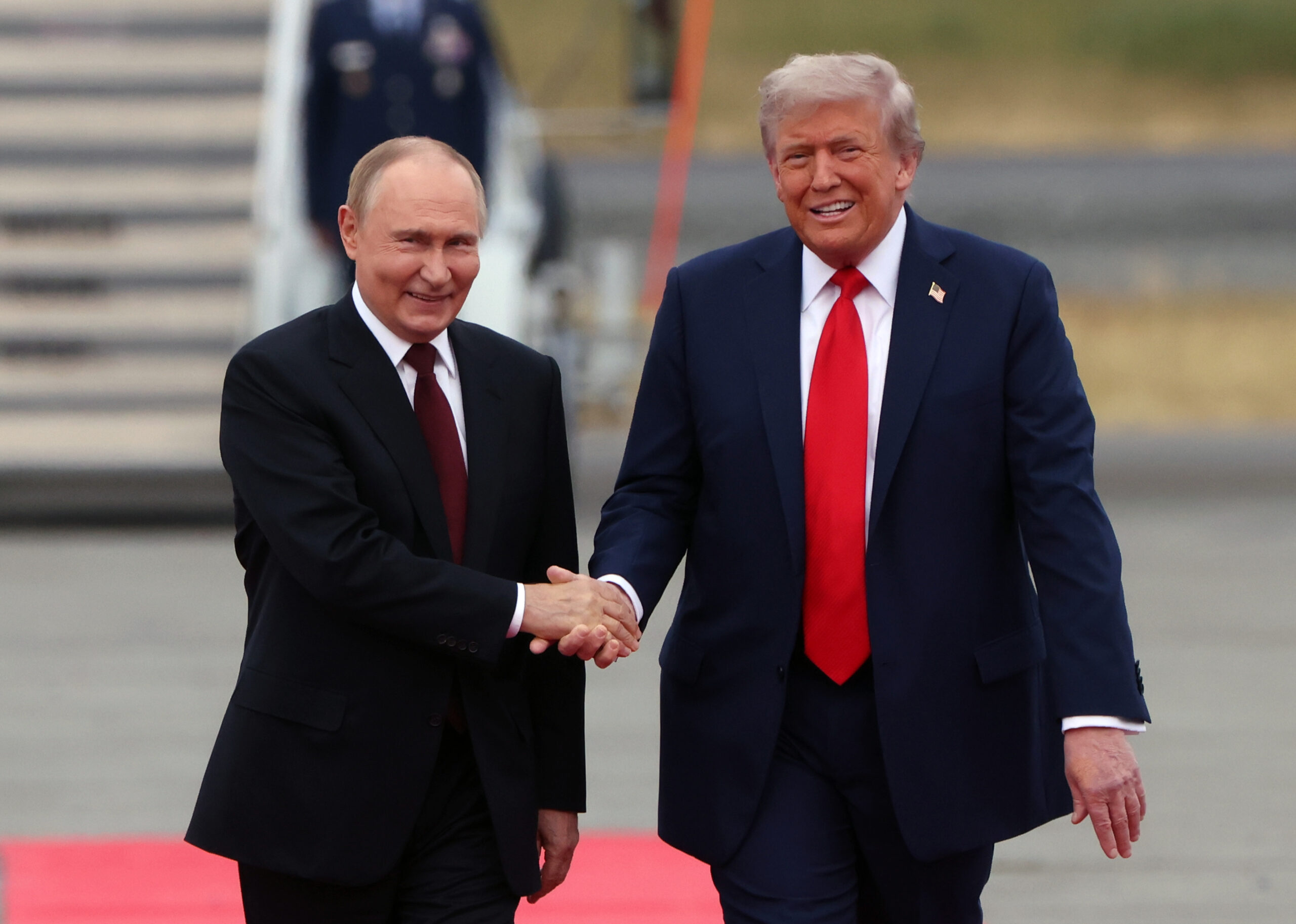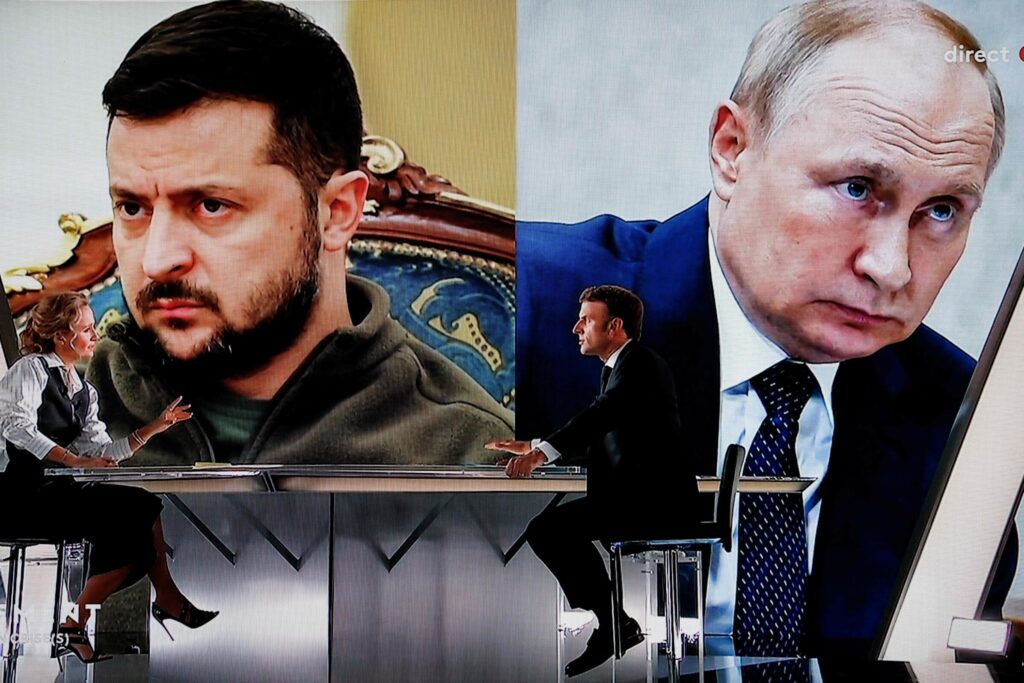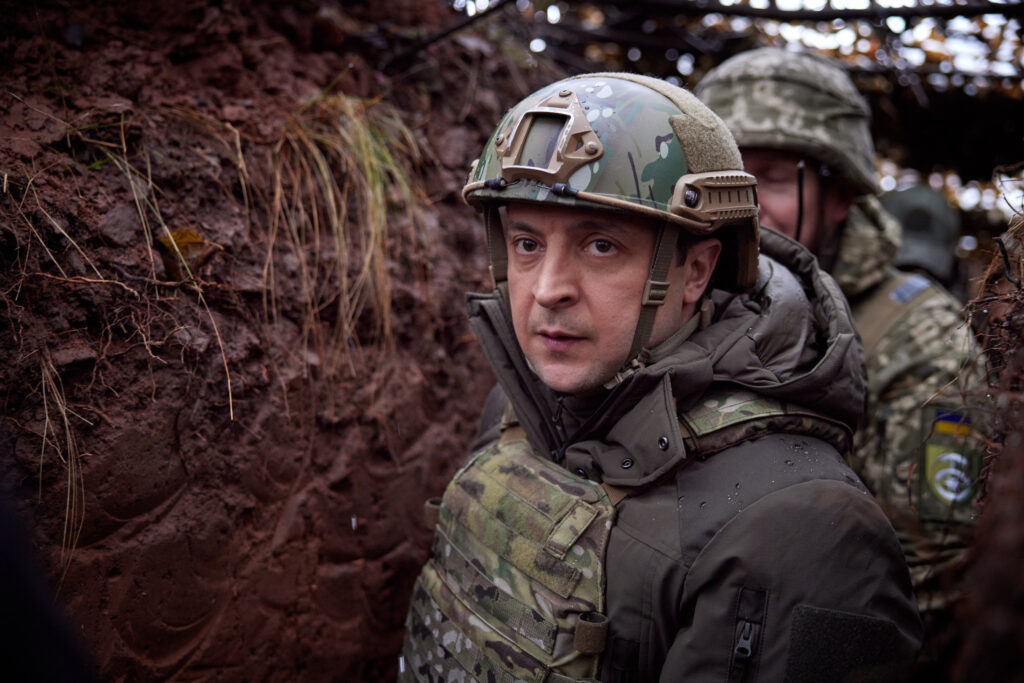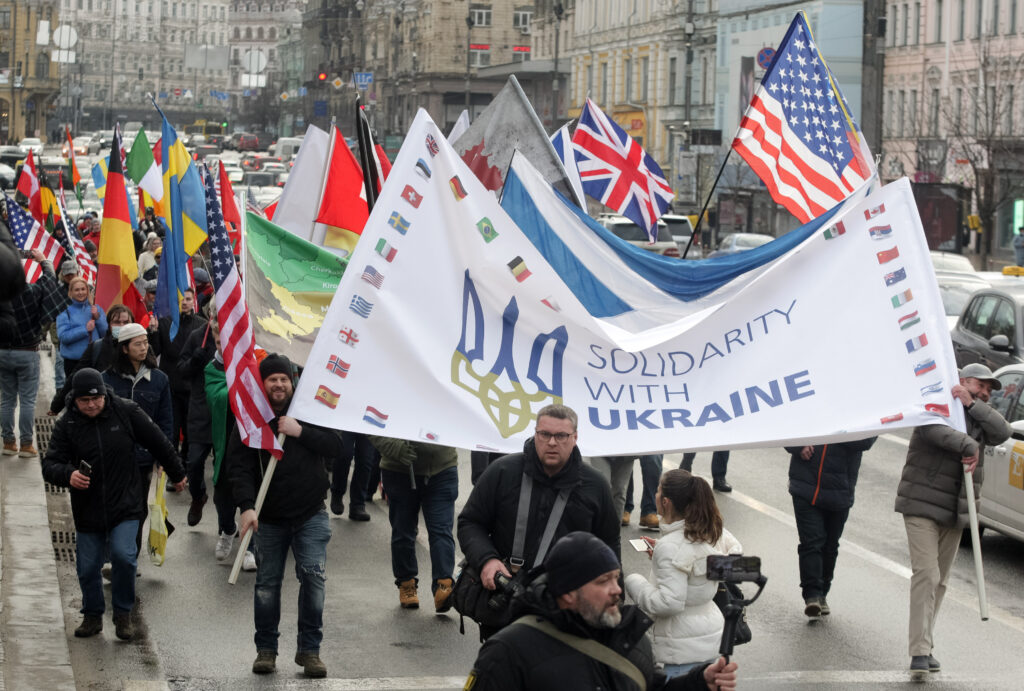
Trump and Putin’s meeting in Alaska underscored how they see the world in the same way, while highlighting the deepening divisions that are weakening the Western democratic alliance.
By Jarosław Kuisz and Karolina Wigura
August 2025
In late November 1985, U.S. president Ronald Reagan and Soviet leader Mikhail Gorbachev held a groundbreaking summit at the Fleur d’Eau Palace in Geneva, Switzerland. The current U.S. president, a not-yet-40-year-old Donald J. Trump, and Russian president, the then 33-year-old KGB officer Vladimir Putin, likely watched that televised drama along with the rest of the world. Beyond the pomp and splendor of the event were the high stakes of the nuclear-arms race: Many believed that the fate of the world would be decided at the meetings.
While the U.S. and Soviet diplomatic teams mulled over the substance of those talks, the principal actors themselves were also preoccupied with appearances. Should the American president wear a coat during the welcome ceremony or not? After all, Reagan — at the time the oldest president in U.S. history — appeared younger in just a suit. It was a battle of image and perception that seems almost quaint today.
In a partial reenactment of that spectacle, Donald Trump and Vladimir Putin met last week, on August 15, in the U.S. state of Alaska — just across the Bering Strait from Russia. Although the world today is no longer dominated by the two Cold War superpowers, once again it was only Washington and Moscow haggling over the world map together, with both presidents perhaps hoping to right a course each believed had gone dreadfully wrong over the past forty years.
In Anchorage, the two leaders sought to recreate the old performance of might: two great powers legitimizing each other by the very fact of negotiating alone. Since every historical reenactment invariably contains an element of entertainment, it is hardly surprising that Russian foreign minister Sergey Lavrov arrived at his hotel wearing a sweater emblazoned with the letters CCCP, the Russian acronym for the Union of Soviet Socialist Republics. Although no agreement was reached in Alaska, this was the moment when the new path of foreign policy became abundantly clear.
Europe in the Second Row
Such historical theatrics have never appealed to top European leaders. In the 1980s, French president François Mitterrand, U.K. prime minister Margaret Thatcher, and German chancellor Helmut Kohl would have certainly preferred a seat at the main negotiating table. Today, France’s Emmanuel Macron, Britain’s Keir Starmer, and Germany’s Friedrich Merz are striving to maintain a semblance of composure. Being relegated to the second row of negotiations pleases none of them.
And even the second row is home to multiple geographies, each with its own reasons for fear or outrage. For West European countries, being initially sidelined from peace talks constituted a diplomatic downgrading. For Russia’s immediate neighbors, above all Ukraine, the Alaska meeting stirred acute existential anxiety, as their very fate was hanging in the balance. For Eastern Europeans, the possibility of a new Munich or Yalta — where foreign powers decided the destiny of peoples and borders at the beginning and end of World War II — loomed large on social media. And for liberal democrats the world over, the red-carpet welcome for Putin, whom the International Criminal Court has accused of war crimes, provoked moral indignation. To them, Putin’s smile appeared to mock the victims of his war.
In this sense, the Alaska Summit functioned as an unwanted mirror of Europe. Certain cracks were visible within it. Some politicians were concerned primarily with the symbolic loss of the EU’s significance. Others were preoccupied with the challenge of preserving sovereignty. Still others, such as Hungary, perceived the international fractures as an opportunity to enhance their diplomatic standing. Viktor Orbán posted on X (formerly Twitter): “May every weekend be at least this good!”
On August 18, Trump welcomed Ukrainian president Volodymyr Zelensky and European leaders in Washington for a new round of talks. These were intended not only to seek peace but to repair the fractured European mirror. This moment also demonstrated the limits of historical reenactment. In 2025, the world no longer revolves exclusively around the United States and Russia. It is no longer possible for Washington and Moscow to act at the negotiating table as if the European Union does not exist. The military menace emanating from Moscow, meanwhile, has compelled Europeans to act — outwardly projecting unity with and diplomatic subservience to the United States, even though its current government has at times displayed open hostility toward Europe’s traditional liberal-democratic parties.
Two Wests
The ideologically intense pressure on the European Union thus originates not from Russia but from the United States. The U.S. president, in adhering to his “America First” platform, has changed the nature of U.S.-European relations and made a once-unquestioned alliance less certain. This is a striking change from the Reagan era — not just in foreign policy but of the entire international order that has been in place since the Second World War.
Europe, however, remains dependent on military assistance, not to mention economic resources and new technologies, from the United States. Therefore, figures such as NATO secretary-general Mark Rutte occasionally go to great lengths to emphasize transatlantic unity and conceal ideological differences among NATO members. In reality, however, such gestures merely buy time — or reflect the hope of a reversal of political trends in the United States. But whether or not European leaders acknowledge it publicly, there are today two distinct “Wests” on either side of the Atlantic.
For those countries that have sought to emulate Western liberal democracy since 1989 — the postcommunist states as well as South Korea and Taiwan — there was once little doubt or controversy about where the West was located on the map, or what it meant to adopt the Western political regime and economic model. Indeed, Russia began its campaign in Ukraine after the Ukrainian people opted for the path of Western democracy. And the United States and Europe long stood together in support of democracy in Ukraine. But this alliance is now fraying as the U.S. and European models increasingly diverge.
Globally, states that once sympathized with or emulated the West now confront a new dilemma: Is it more advantageous in 2025 to embrace the American or the European model? In our assessment, the outcomes of the August summits will neither discourage countries from choosing the former nor push them toward adopting the latter. By contrast, following the 1985 Geneva summit, there was but one choice: disarmament and the promotion of liberal democracy.
The Summits of Two Ideologies
The recollection of the Reagan–Gorbachev summit is instructive for yet another reason. It illustrates how far Presidents Trump and Putin have departed from their predecessors in both agenda and style. Reagan and Gorbachev began their talks from a position of mutual distrust and the ideological confrontation between capitalism and communism.
Trump and Putin, in contrast, appear to be ideologically aligned on many issues — most notably, in their shared ambition to weaken, if not dismantle, the liberal international order. They show little interest in multilateralism or cooperation through international institutions. To the contrary, both are skeptical of the European Union in the form it has taken since the Maastricht Treaty (1992) and instead seem to view world politics in terms of traditional spheres of influence. Both leaders also embrace a social conservatism that lauds “traditional values” and rejects so-called woke ideology.
Reagan and Gorbachev, despite their personal imperfections, were politicians who ultimately set a markedly different course for international politics: opening borders, respecting signed agreements, promoting disarmament policies, and recognizing the right of small nations to self-determination. Admittedly, these processes unfolded gradually and imperfectly. All such historical comparisons have their limits; yet this was the path they initiated. It was a trajectory aimed at constructing a world in which Ukraine could obtain independence, rather than have to fight a war to defend it.
As part of the historical reenactment of 2025, Putin has already publicly invited his American counterpart to visit Moscow. Paradoxically, therefore, the Alaska summit may represent the beginning of a series of meetings reminiscent of those of the 1980s — except that today such talks will most likely be aimed not at consolidating peace but at ending decadeslong efforts to realize the vision of a peaceful world that emerged from the Reagan-Gorbachev summits.![]()
Jaroslaw Kuisz is associate professor at the University of Warsaw, the editor-in-chief of Kultura Liberalna in Warsaw. Karolina Wigura is associate professor at the University of Warsaw and a member of the board at the Kultura Liberalna Foundation in Warsaw. They are both Associates in Russian and East European Studies (REES) at the Oxford University School for Global and Area Studies and senior fellows at Zentrum Liberale Moderne in Berlin.
Copyright © 2025 National Endowment for Democracy
Featured image credit: Contributor/Getty Images
|
FURTHER READING |
||

David vs. Goliath: Defeating Russian Autocracy |

Why Ukraine Shouldn’t Negotiate with PutinMany pundits cry for a negotiated settlement to end the war between Russia and Ukraine. But they misunderstand Vladimir Putin’s motives. The only just end to the war will be in the trenches, not at the bargaining table. |

What Putin Fears MostRobert Person and Michael McFaul Forget his excuses. Russia’s autocrat doesn’t worry about NATO. What terrifies him is the prospect of a flourishing Ukrainian democracy. |
